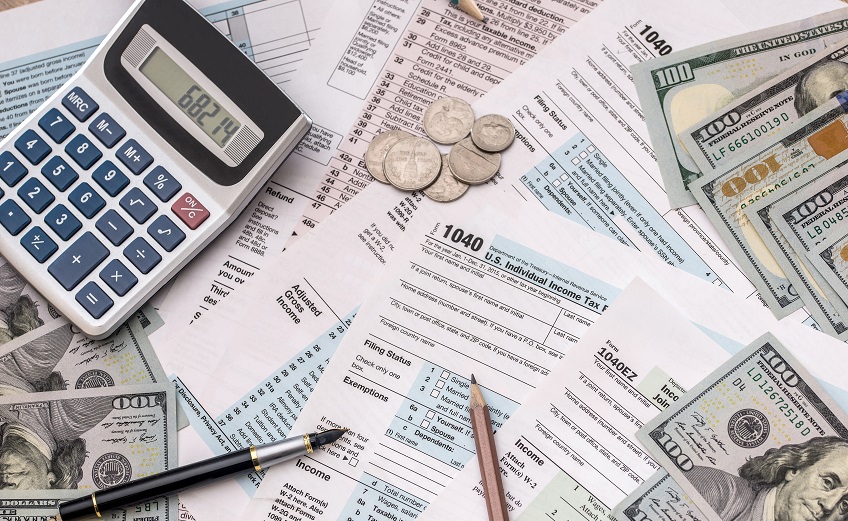How You Can Use Annuities for Greater Tax Efficiency in Retirement
 As an annuity owner, you take comfort in knowing that you have planned for an uninterrupted lifelong retirement income stream. Working alongside other income sources from your nest egg, it will pay out, like clockwork, to fund the retirement you have always imagined.
As an annuity owner, you take comfort in knowing that you have planned for an uninterrupted lifelong retirement income stream. Working alongside other income sources from your nest egg, it will pay out, like clockwork, to fund the retirement you have always imagined.
But have you considered whether your income streams are as “efficient” as possible? Whatever retirement strategy you choose — income and all — needs to be “tax-efficient” to ensure you get the most mileage out of your money.
This is just one more piece in the retirement planning puzzle that each of us must solve. When we don’t plan for retirement, we run the risk of underspending or overspending our retirement dollars.
What if underspending doesn’t seem like a problem, but rather like an advantage? Consider what events and opportunities to which you may say “no.” And simply because underspending pressures you to have a scarcity mentality, or when you don’t really know if you can afford them.
Perhaps you might pass on an important family event or skip that overseas vacation you always expected to be a highlight of your retirement years. All because you didn’t have a true picture of your anticipated income compared to your expenses.
Overspending can be a Dangerous Double Dip
Overspending can lead to even more obvious consequences. Belt tightening when you long ago gave up even wearing belts—and anything else that constricted you or your lifestyle.
But if the bulk of your retirement money is in qualified accounts – or in accounts with a pre-tax advantage for accumulation – undisciplined withdrawals could be a ticking tax time bomb waiting to explode.
For example, if you withdraw money for income in a given year, you won’t have that full sum for income. For example, say you need to take $20,000 from your $500,000 traditional IRA to cover your income gap for the year.
Since the $20,000 balance is part of funds that have grown tax-deferred, Uncle Sam will ask for his share.
You will owe taxes on the balance at your top effective rate when you withdraw it. That means you won’t have the full $20,000 to use for your yearly cash-flow needs.
Without a set distribution plan, withdrawing money ‘willy-nilly’ can quickly lead to taxes taking a bigger bite of your income dollars than might be necessary.
How Annuities Can Contribute to Tax Efficiency
Having the right annuity for your needs can be a strong addition to your retirement portfolio. When it works in tandem with other income vehicles, an annuity can help you plan for greater tax efficiency in a variety of ways:
#1: Tax Predictability
By setting up their long-term fixed payouts, annuities don’t just offer the benefit of an income stream that is guaranteed, uninterrupted, and doesn’t change with market swings. They also offer more tax predictability.
Having these dedicated fixed payments for living expenses, or whatever spending you plan for them to cover, makes your tax bill more measurable. Then your tax bill becomes easier to plan for, on an annual basis and even a long-term basis.
#2: Preventing a Big Tax Hit
Annuities can help balance against the risk of cashing out too many funds at once and suffering a big tax hit, as a consequence. This is a real hazard for retirement investors. One in five people who take a lump sum from their retirement plans end up spending all of it in five years, according to a recent study by MetLife.
By setting up a lump sum as a series of payments, you can spread your tax burden out over many years.
#3: Tax Diversification
Most importantly of all, you can change up and diversify your tax mix with non-qualified annuities.
If you put money that you have already paid income taxes on into an immediate annuity, a portion of your monthly payments will be tax-free. This can help reduce your overall tax bill and lower the taxability of your Social Security benefits, as well.
#4: Paired with Other Strategies
Be sure to investigate ways to use other vehicles alongside annuities to lower your tax burden.
With Roth accounts, you take the tax hit on your balance upfront. But if you own the Roth account for a minimum of five years, among other conditions, your money grows tax-free and your withdrawals will be tax-free. This can be a great way to lower your tax bill in retirement.
Other vehicles, like cash value life insurance or municipal bonds, can also be tax-free income-paying sources.
You may consider guidance from an advisor in weeding through these opportunities. A financial professional can evaluate your unique circumstances, then walk you through multiple options for your unique retirement and income goals.
Then you can seek confirmation of your tax strategy with your CPA so that every member of your professional team is contributing to your retirement success.
Putting More Tax Efficiency into Your Personal Strategy
This quick rundown is just a starting point. There are many avenues for managing your taxes in retirement, and depending on your complete financial picture, only a few may be right for you.
As you explore the use of annuities and other tools for your retirement, consider enlisting help from a financial professional. They deal with money matters every day.
Get in touch with an independent financial professional at HFHanes.com to explore some potential income and wealth protection strategies for you. And should you have any questions, please call us at 480-607-1346 or 888-416-(LIFE).



